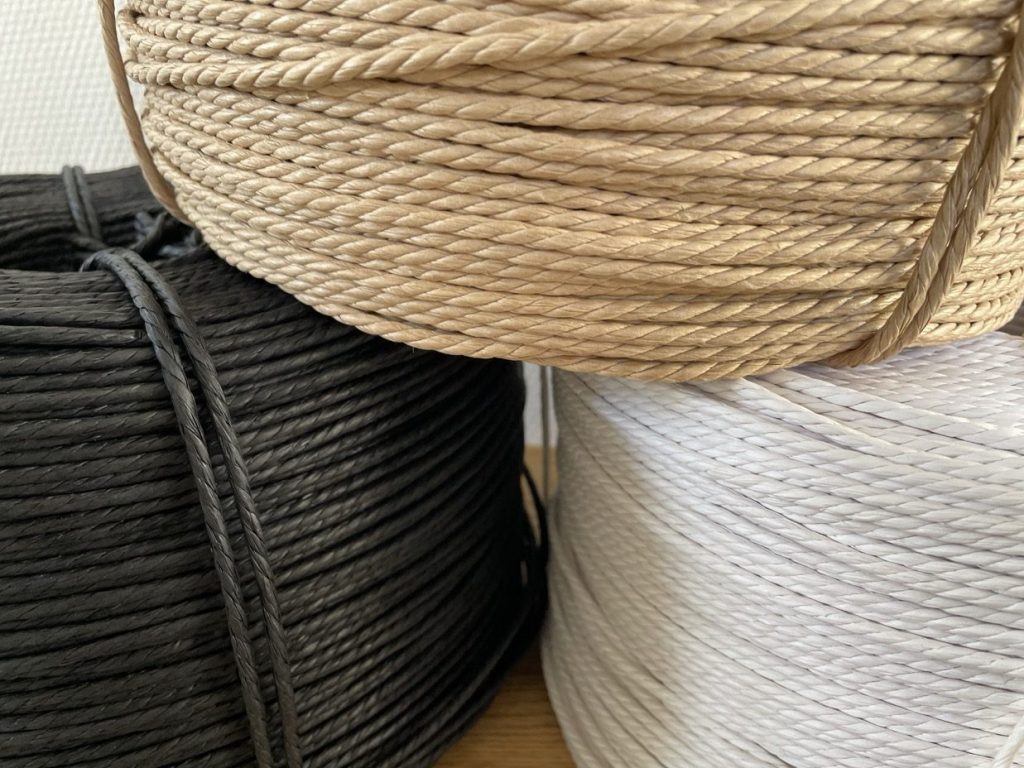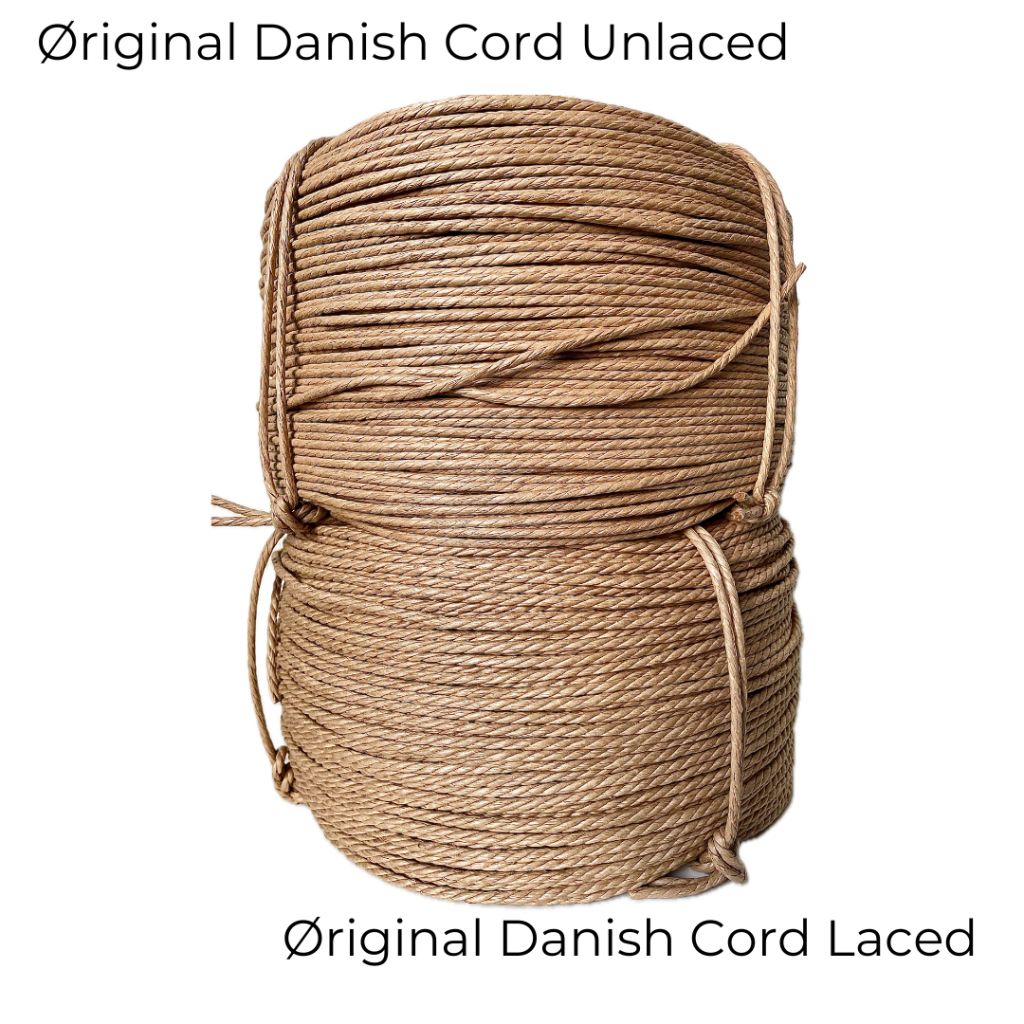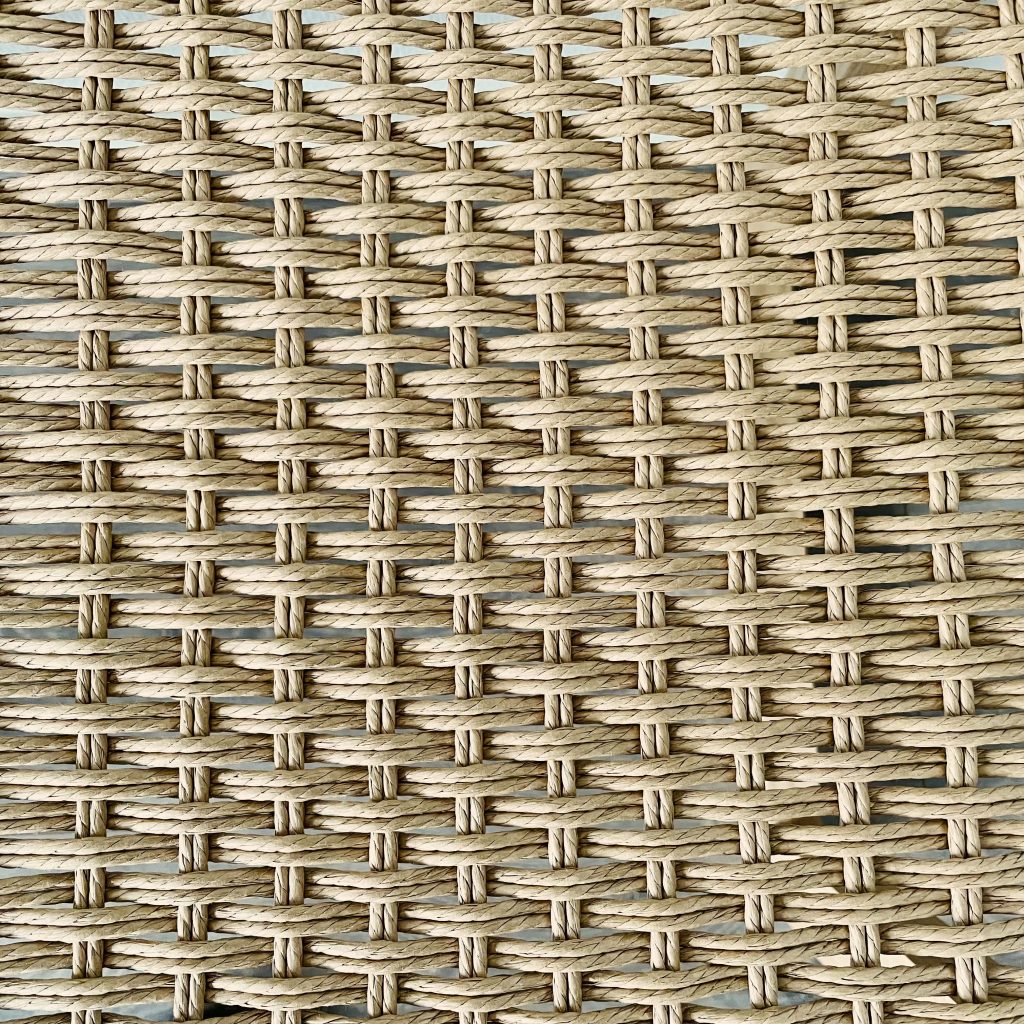Understanding Danish Cord

Composition and manufacturing process
Danish Cord is a unique material made from twisted paper fibers. The cord’s composition consists of tightly twisted paper strands, resulting in a sturdy yet flexible material that is ideal for weaving. The manufacturing process begins with sourcing high-quality paper, ideally from sustainable sources. The paper is carefully twisted and processed to achieve the desired thickness and strength of the cord. The result is a versatile material that boasts both natural charm and eco-friendliness.
Types of Danish Cord
There are different types of Danish Cord available, each varying in thickness and texture, catering to various weaving techniques and furniture styles. The most common thicknesses range from 3mm to 4mm, with some specialty cords going up to 16mm.
Natural Danish Cord: This is the most common and traditional type of Danish Cord, featuring a natural beige colour. It exudes a timeless charm and is often used in classic and contemporary furniture designs.
Coloured Danish Cord: For those seeking a more vibrant and contemporary look, coloured Danish Cords are available in a range of hues. These cords offer opportunities for creative and expressive weaving projects, adding a pop of colour to the furniture piece.
Danish cord laced vs unlaced – what is the difference?
The difference between laced Danish cord and unlaced is subtle as first sight. Laced cord is slightly more twisted. This makes it look more like a rope. Unlaced cord is less twisted which means the look and feel of the cord is smoother (i.e. the spiralling lines of the twisted cord are less prominent).
The picture below shows both laced and unlaced cord side by side.

Characteristics of Danish Cord
Danish Cord’s specific properties make it an ideal material for weaving, ensuring both durability and comfort. Some of its key characteristics include:
Strength and Flexibility: Despite its delicate appearance, Danish Cord is surprisingly strong and can withstand regular use, for decades. Its flexibility allows for comfortable seating and adapts well to the contours of the body.
Natural Aesthetics: Danish Cord’s organic and earthy appearance complements a wide range of furniture styles. It adds warmth and texture to pieces, enhancing their overall aesthetic appeal.
Eco-Friendly Choice: As a sustainable material made from natural fibres, Danish Cord aligns with environmentally conscious design practices, making it an eco-friendly choice for both artisans and consumers.
Breathability: Unlike solid surfaces, Danish Cord’s woven structure allows for air circulation, providing enhanced comfort during long periods of sitting.
Ease of Repair: One of the advantages of Danish Cord weaving is that it allows for easy repair and replacement of individual strands, prolonging the lifespan of the furniture.
Applications of Danish Cord
While Danish Cord is famously used in furniture design, its applications extend beyond chairs. It can be creatively incorporated into various projects such as:
Stools and Benches: Danish Cord weaving can be used to create comfortable and stylish seating on stools and benches, both new and old ones.
Sofas and Settees: Combining Danish Cord with upholstered elements in sofas and settees can yield unique and captivating furniture designs.
Home Decor: Danish Cord is also employed in crafting lampshades, room dividers, and decorative panels, adding a touch of elegance to interior spaces.
Crafting and Art Projects: Beyond furniture, Danish Cord’s versatility makes it a favourite material for crafting baskets, wall hangings, and sculptural art pieces.
Choosing the Right Danish Cord
When starting a Danish Cord weaving project, selecting the appropriate cord is crucial. Consider the following factors when choosing the right type:
Weaving Technique: Different weaving techniques may require specific cord thicknesses. When replacing old Danish cord chair restoration, identifying the cord used by the original designer can be important if you want it to be the same. This may include whether the cord is laced or unlaced and the thickness of the cord.
Furniture Style: Consider the overall design and aesthetics of the furniture piece. Natural Danish Cord complements classic styles, while coloured cords can enhance more modern or eclectic designs.
Colour Scheme: If using coloured Danish Cord, coordinate it with the furniture’s colour scheme and the surrounding decor to achieve a cohesive look. It is also important to check that the Danish cord is coloured to its core and not only on the outer layer. Understanding Danish Cord is essential to unlocking its creative potential. From its composition and manufacturing process to its various types and applications, Danish Cord is a versatile and eco-friendly material that brings both practicality and beauty to furniture and home decor.

